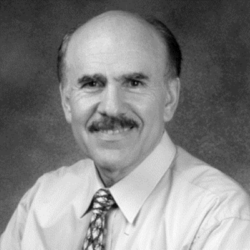
About
269 South Beverly Drive
Unit 288
Beverly Hills, CA 90212
Research Description:
The principal objective of my research program is to elucidate the mechanisms of regulation and modulation of nitric oxide (NO) production and cytotoxicity in macrophages, vascular cells, and tumor cells. This laboratory employs a wide variety of techniques and procedures to answer important and timely questions pertaining to the biochemistry, molecular biology, and pathophysiology of NO. Enzyme protein purification and characterization, extensive cell culture systems, physiologic methods for assessment of organ and tissue functions, various molecular biology techniques (Northerns, Westerns, Southerns, gel shift assays, and related procedures), and various analytical techniques (HPLC, chemiluminescence, spectroscopy) are techniques routinely employed. We make the effort to develop any technique that is required to answer important research questions.
NO is one of the simplest molecules in nature but is synthesized by a complex enzymatic process. NO synthase is a homodimeric flavo-hemoprotein that catalyzes the 5-electron oxidation of L-arginine to NO + L-citrulline. This enzymatic reaction is similar to that catalyzed by the cytochrome P450 system, and requires numerous cofactors including calmodulin, NADPH, flavins, heme and tetrahydrobiopterin. NO synthase exists as three different isoforms; endothelial, neuronal and inducible. Endothelial and neuronal NO synthase are constitutively present in select cell types and is activated by intracellular calcium, which promotes the binding of calmodulin to the enzyme and thereby activates it. The inducible NO synthase already has calmodulin tightly bound as a subunit and, therefore, requires no calcium for enzyme activation; it is already activated as it is being synthesized from its mRNA. NO is a very small, lipophilic, readily diffusible, chemically unstable molecule with a very short half-life (seconds) and produces effects immediately and locally.
NO elicits physiological (vasodilation, anti-platelet effects, neurotransmitter functions) and pathophysiological actions (septic shock, acute and chronic inflammation, destruction of invading bacteria, viruses and tumor cells). Two different constitutively present isoforms of NO synthase (endothelial and neuronal NOS) are responsible for biosynthesis of small physiologically important amounts of NO. Such small amounts of NO are completely non-cytotoxic. An inducible isoform of NO synthase, which a distinct gene product from the constitutive isoforms, is responsible for high-output production of NO. Generation of large amounts of NO is associated with cytotoxicity and pathophysiology. Examples include induction of NO synthase in vascular smooth muscle resulting in profound vasorelaxation and hypotension, the characteristics of endotoxin shock; induction of NO synthase in brain microglia and astrocytes thereby resulting in production of large amounts of NO which permeate nearby oligodendrocytes resulting in impaired myelin production, the hallmark feature of multiple sclerosis; induction of NO synthase in joint tissues resulting in acute and chronic inflammation, characteristic signs of arthritic disease.
Research efforts in this laboratory are directed toward better understanding the factors that influence NO production and cytotoxicity. Studies are focused on the transcriptional regulation of inducible NO synthase and the involvement of NF-kB and other transcription factors in the inducible expression of the NO synthase gene. Separate projects focus on the mechanism by which oxidative stress triggers activation of NF-kB and induction of host-defense proteins. The relationship between oxidative stress and signal transduction in inducible gene expression is a major area of current focus. Additional projects address the roles of phosphorylation and proteolysis in gene transcription. Pertaining to the cytotoxic actions of NO, studies focus on the chemistry of NO as a reactive species with iron and copper, and how such reactivity alters cell function. The double-edged role of NO as both a protective species and deleterious species is intriguing and under investigation in various cell types including tumor cells as NO appears to have potent tumoricidal activity.
Additional specific aims focus on (1) co-induction of NO synthase and arginase and arginine transporters in macrophages and vascular cells to understand the factors affecting arginine availability for NO synthase catalyzed NO production; (2) mechanisms by which certain combinations of lipopolysaccharide plus cytokines cause rapidly developing death in certain cell types but not others; (3) mechanisms by which NO injures target cells and microorganisms without injuring cells that produce NO; (4) elucidation of the role of tetrahydrobiopterin as a cofactor for NO synthase; (5) elucidation of the mechanism by which NO causes a negative feedback effect on NO synthase to inhibit its own synthesis; (6) elucidation of the mechanism by which NO activates guanylate cyclase, the enzyme that catalyzes the formation of cyclic GMP, an important second messenger that mediates the physiological actions of NO; (7) determination of the factors that affect the transcriptional expression and posttranslational modifications of guanylate cyclase.
This laboratory made the original observations that NO is a vasodilator (1979) and inhibitor of platelet aggregation (1981), that NO elicits its biological actions via the second messenger cyclic GMP (1979-1981), that NO activates guanylate cyclase by heme-dependent mechanisms (1982), that the endothelium-derived relaxing factor is NO, that NO is the neurotransmitter in nonadrenergic-noncholinergic neurons innervating the erectile tissue of the penis and is responsible for penile erection (1990), that NO is a negative feedback modulator of NO synthase (1992), and that aspirin and related drugs interfere with the inducible expression of the NO synthase gene (1995).
Therefore, this laboratory is committed to continued and persistent research into the biology and chemistry of NO.
Education and Degree(s)
- Ph.D.